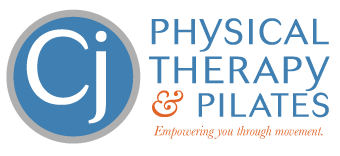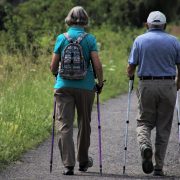Six Ways to Help Manage Knee Arthritis and Stay Active
Knee arthritis is one of the most common forms of osteoarthritis, affecting more than 80% of cases and impacting at least 19% of Americans over the age of 45.
For many, a diagnosis of knee osteoarthritis leads to chronic, debilitating knee pain that stops them from doing their favorite activities. Sometimes it’s due to the limiting belief that once you have arthritis, you have “bad knees” for life. Other times it’s because you’ve been told you have “bone on bone” in your knee and that you should scale back on activity so you don’t make it worse.
This line of thinking is flawed and often leads to unnecessary injections, procedures, and surgery. Because being active is one of the best things you can do to manage your arthritis and protect your knees.
But what if movement and activity hurt?
Here are six ways to help manage arthritis in your knees so you can stay active and keep doing the things you love:
1. Strengthen Your Hips and Core
When you have poor control of your hip and core muscles, you get more stress through your knee joint. The strength of your upper leg muscles is very much dependent on your hip and core strength. Your thigh bone (femur) connects your knee and your pelvis, and your core strength controls your pelvis. If your pelvis isn’t stable, your femur is going to have a difficult time staying in alignment, which will ultimately have an impact on your knee joint. If you’ve got arthritis in your knees – it’s critical you minimize any added stress to your knee joints. Strengthening your core and having good hip strength will help prevent and minimize the symptoms of arthritis – keeping you active for longer.
2. Keep Your Knees Mobile
Mobility before stability is my mantra. And I say this for just about every joint in your body. But it’s especially true for your knees. There are joints whose primary function is stability, and there are those whose major function is mobility. Your knee needs to be mobile. Its major purpose is to bend all the way so you can squat and pick things up, and it needs to straighten all the way to give you stability when you need it. When either of these motions is lacking, your ligaments and surrounding muscles will suffer, adding more wear and tear to your joint, which can aggravate arthritis symptoms. When folks are told they have arthritis – a lot of folks just “accept” that their knees are stiff. But the truth is that even a 10% improvement in your knee mobility can lead to significant functional gains, help you better manage arthritic knee pain, and avoid major interventions.
3. Don’t Stop Your Activities
When people find out they have arthritis – and especially if they’ve been told it’s “bone on bone” – they often think that slowing down or stopping activity will help protect their knees. This couldn’t be farther from the truth. Study after study shows that severe joint pain among adults with arthritis is worse with inactivity. When you remain active, you keep blood flowing, your knee joints mobile, and your muscles strong. These are very important factors in managing your arthritis. Plus – sometimes the knee pain you feel when you’re doing certain activities has nothing to do with your arthritis. Statistics show that only 15% of patients with evidence of knee osteoarthritis on X-ray even had symptoms. That means that the other 85% are walking, biking, and running around enjoying their favorite activities – despite what their X-ray says. The point here is to keep doing your activities – it’s one of the best ways to prevent arthritis from advancing and protect your knee joints as you age. If you’re really struggling with this – it’s time to talk to a knee expert who can help you.
4. Optimize Your Footwear and Walking Mechanics
Many people don’t realize how much their feet impact their knees. If you’re wearing unsupportive shoes or walking with poor mechanics – your knee joints will absorb more stress than they should. Over time, this increased strain can exacerbate arthritis symptoms. Consider wearing supportive shoes that align your feet properly and provide adequate cushioning. Walking is a really good activity for your knees and arthritis. So if you’re experiencing frequent knee discomfort while walking, a professional gait assessment can help identify areas of weakness or imbalance that might be contributing to your pain as well as help you find the perfect pair of footwear.
5. Opt for Natural, Joint-Friendly Pain Relief
Your knees work hard every day. And if you have arthritis – finding relief without relying on medications or invasive treatments/injections can be a game-changer and minimize any downtime. There are plenty of natural pain relief strategies that will help minimize inflammation and keep you moving comfortably. Heat therapy and corrective stretching techniques are great for reducing stiffness by keeping blood flowing and muscles relaxed and flexible. Similarly massage and foam rolling can improve circulation and ease muscle tension around your knee joint. Regenerative treatments like shockwave therapy, EMTT, and dry needling are becoming popular alternatives to cortisone shots – as they work with your body’s own mechanisms to stimulate healing versus causing joint damage over time. By integrating natural pain relief methods into your routine, you can better manage knee arthritis and stay active without unnecessary reliance on medications or invasive procedures.
6. Manage Your Inflammation with Diet and Hydration
Chronic inflammation worsens arthritis symptoms, but the right diet can help. Anti-inflammatory foods like fatty fish, leafy greens, berries, and turmeric support joint health, while omega-3s from fish oil reduce inflammation at a cellular level. Collagen powder and glucosamine-chondroitin can support cartilage health and joint lubrication. Hydration is also key. Water keeps joints cushioned and prevents excess friction. Simple dietary changes, paired with the right supplements, can make a significant difference in managing knee arthritis.
Final Thoughts
Even if you’ve been told you have “bone on bone” or advanced arthritis, you can still improve your knee health. The best thing you can do for your knees is to keep moving. And if pain is getting in the way – I hope these strategies help you manage your symptoms naturally – so you can avoid resorting to medications, injections, or surgery.
Dr. Carrie Jose, Physical Therapy Specialist, and Mechanical Pain Expert, owns CJ Physical Therapy & Pilates in Portsmouth, NH, and writes for Seacoast Media Group. If local to Portsmouth, NH, and looking for help – request a FREE Discovery Visit with one of her Specialists by CLICKING HERE.




